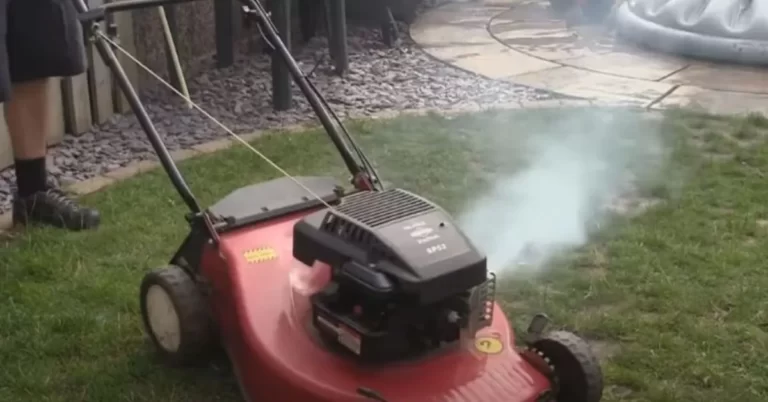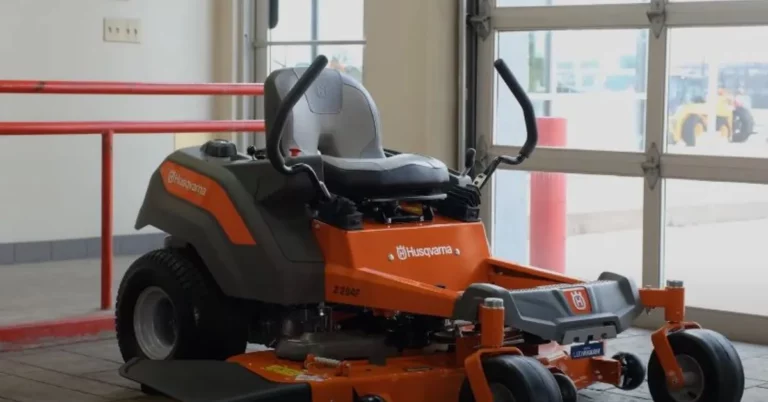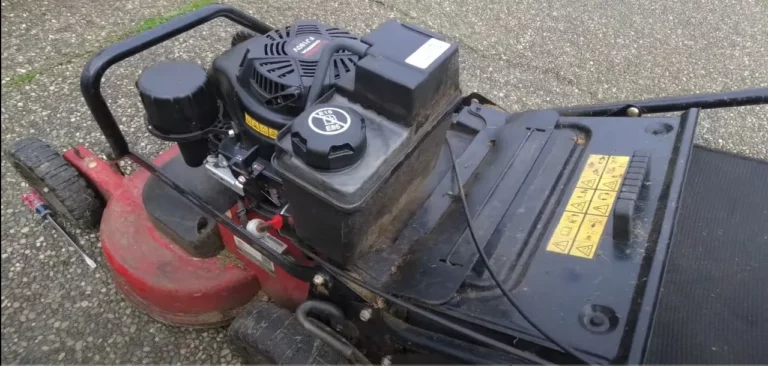Why Husqvarna Riding Mower Won’t Move Forward or Reverse?
Husqvarna riding mowers are famous for their optimal-grade performance and longevity. With regular maintenance and care, these ride-on mowers can last for years.
However, sometimes due to unknown reasons, the Husqvarna riding mower won’t move forward or reverse. When this problem arises, people don’t know how to contemplate or solve it.
A riding mower won’t move due to complications in the bypass control lever, terrain, drive belt, switch, or hydraulic fluid compartment. Besides that, there are tons of analogous reasons that may temporarily jam the mower.
Check out the following article if you want to learn comprehensively about why the Husqvarna riding mower won’t move forward or reverse.
Besides enlisting the potential causes, I have also mentioned their corresponding solutions that can help you to solve these problems.
8 Reasons Why the Husqvarna Riding Mower Won’t Move Forward or Reverse?
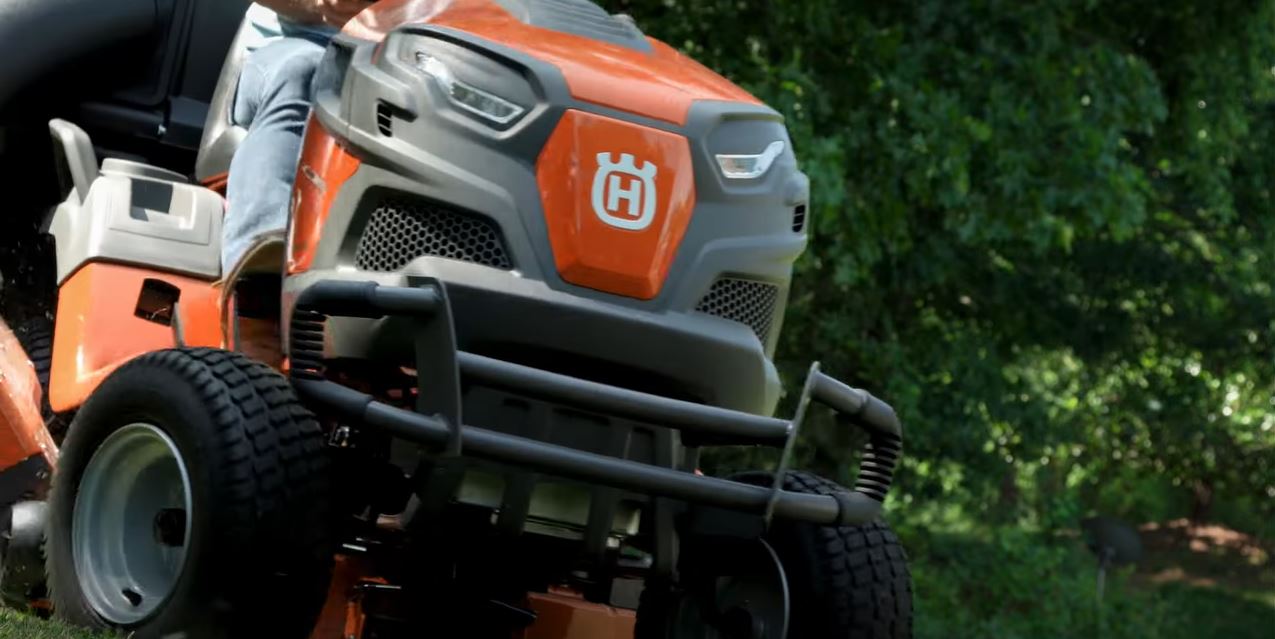
Sometimes the riding mower may appear functional and healthy, but suddenly it would not move forward or backward. This situation may be caused by multiple reasons.
Some of the most common causes include the following;
Also Read: Cub Cadet Vs Husqvarna
1. Disengaged Bypass Control Lever
Husqvarna’s official website states that the most common reason behind mower jamming involves a disengaged bypass control lever.
Due to misadjustments, the position of the bypass control level may get altered. The change in the bypass lever’s position disengages it. And when the lever becomes disengaged, the engine jams and the mower won’t move.
2. Engaged Brakes
Contrary to the previous complication, the equipment stops moving if the brakes are engaged. Like in a car, the engaged brakes prevent the equipment from moving in either direction.
If your equipment’s brakes are engaged, don’t consider it a malfunction. In fact, your mower/tractor is perfectly fine.
It just happens due to sheer negligence or lack of knowledge regarding the function of brakes.
3. Loosened or Broken Transmission Belt
Another possible reason behind the riding mower being stuck can be a loosened, damaged, or worn-out transmission belt.
Over time, the transmission belt can wear out due to excessive use. Similarly, overload on the equipment may also damage or slacken the belt.
The transmission belt performs an integral role in running the equipment smoothly. In fact, if the problem is prolonged, the equipment won’t even move, leading to a temporary jam.
Also Read: Husqvarna Zero Turn Mower Problems
4. Slackened or Overtightened Drive Belt
The drive belt is a crucial component that plays a pivotal role in the equipment’s movement. This belt delivers the power generated by the engine to the equipment’s wheel.
When the belt is improperly tensioned, i.e., slackened or overtightened, it may not be able to deliver power to the wheels efficiently. As a result, the mower jams and won’t move in either direction.
The drive belt slackens when the equipment is used for a long time without maintenance. In contrast, overtightening makes the belt too compact, ultimately causing it to break.
A mower with no history of internal inspection or is new won’t encounter this problem.
Thus, if your mower belongs to any of the two categories and is still not moving, other reasons may be responsible for the ailment.
5. Hydraulic Fluid Friction
Hydraulic fuel or oil lubricates the equipment and reduces friction within its internal component.
As a result, the mower delivers sufficient power to the wheels, and the equipment moves freely.
However, the hydraulic fluid levels may diminish or lose functionality with time. As a result, the friction increases within the mower, generating less power than required.
Initially, the equipment would become slow due to increased friction. But if not timely solved, the problem becomes severe.
At last, the mower stops moving after a certain period due to towing friction, which disables the mower from viable performance.
6. Issues in the Switch
The Husqvarna riding mower won’t move forward or reverse due to a faulty switch. On the main circuit board, you will find a switch that operates the belts and allows movement.
Sometimes due to general malfunction, the switch may stop working. And when the switch does not function, the equipment becomes static.
Therefore, the engine might start, but you won’t be able to move the mower.
Also Read: How to Bypass the Ignition Switch On Riding Mower?
7. Key Stock Missing
If you notice, you will find a small metal piece on your mower’s wheels. This piece attaches the wheels to the axles.
The axle is responsible for rotation in the wheels. The rotatory movement from the axle is transferred to the wheel with the key stock.
However, sometimes the key stock may get misplaced. This happens when you change or repair the tires but forget to attach the key stock.
Without the key stock, the wheels won’t be able to rotate, implying zero movements in the mower.
8. Stuck Gear
Some older models of Husqvarna mowers have a gear that you must shift between different positions while using the mower.
If your mower also has a gear and the mower is not moving, it might be possible that the gear has become stuck.
The gear may become stuck due to its inefficient use or improper adjustments. If you impulsively push the gear in order to make it work, you may further damage it.
However, in some situations, corresponding parts of a gear, such as a transaxle, may be faulty.
These problematic components may increase friction in the gear, making it stuck at a certain position.
How to Fix These Issues?
Now that you are familiar with the possible reasons why Husqvarna riding mowers won’t move forward or reverse, it is time to analyze their solutions.
Many people overhype these issues and call for a mechanic. But in actuality, they are pretty simple and can easily be resolved using the following DIY solutions.
Solution 1: Engaging the Bypass Lever
Engaging the lever is very easy and uncomplicated. The following points can guide you through the process.
- Consult the mower’s user manual and check the ideal angle for the lever.
- Now push down the lever in the horizontal position and let it stay there for a brief moment.
- Uplift the lever to the ideal “operational” angle and see if the problem resolves.
Solution 2: Disengaging Brakes
Engaged brakes are not essentially a problem. The brakes are engaged when the mower is in a static position, or you are not using it. But if you want to use the brakes, you must disengage them.
However, people using the mower for the first time or unfamiliar with the brake function may encounter problems understanding what an engaged or disengaged brake is.
Disengaging the brakes is pretty simple. You have to pull down the brake lever- and that’s all! The brakes are disengaged. Now you can easily move the mower to and fro.
Solution 3: Repair or Replace the Transmission Belt
A Loosened transmission belt is easier to fix as minimal repairing is required. But if you are unfamiliar with how to tighten a belt, then the following method can help you.
- Using the manual, locate the position of the transmission belt.
- Remove tension from the belt using a wrench.
- Re-adjust the belt by rotating it onto the axle in the correct direction, which is usually clockwise.
- Tighten the belt appropriately. But don’t make it too compact, as the belt may break.
- Now test whether the tension level in the belt is correct. You can do so by turning on the engine and seeing whether now the mower moves.
If the transmission belt has worn out or become damaged, the only viable solution is to replace it. Re-adjusting a broken belt will not solve the issue. Instead, it may damage other parts.
Solution 4: Repair or Replace the Drive Belt
The solution for this one is quite the same as the previous one. If the drive belt is just loose or too tight, repairing it will resolve the issue.
You can refer to the below procedure to repair the drive belt.
- First, find where the belt is located in the mower.
- Determine whether the belt is slacked/tight, or damaged.
- If the belt is loose, rotate it clockwise to tighten it.
- If the belt is too tight, you need to slink it by rotating it in an anti-clockwise direction.
But if the belt is broken, there is no other alternative than repairing it. You will need to remove the belt and replace it with a new one.
Rotate the new belt in a clockwise direction until it perfectly fits the axle. Don’t make it too tight. Otherwise, the belt may again become damaged.
Solution 5: Restore the Fluid Levels
The mower stops working when the fuel levels are too low. You can opt for the below method to restore the hydraulic fuel levels of your mower.
Also Read: How To Husqvarna Zero Turn Hydraulic Fluid Change
- Remove the old fluid from the mower through the plug hole.
- Ensure that you properly remove the fluid. When mixed, the old oil can reduce the new fluid’s functionality.
- Check the manual and determine which fluid type suits your mower’s model.
- Drain new fluid in the hydraulic system.
- Start the engine and see if the problem resolves.
Solution 6: Replace the Switch
A faulty switch on the circuit board can restrict the mower from moving. Thus, you must replace the switch to solve the problem permanently.
- Remove the switch from the circuit board using the appropriate tools.
- Ensure that you don’t damage the wires during the removal process.
- Now attach a new switch to the circuit board and check if the problem has been solved.
Solution 7: Purchase a New Key Stock
Without the key stock, the axle won’t be able to rotate the wheels, and the mower won’t move. Therefore, purchasing a new key stock is the only solution to this problem.
Key stocks are readily available in automobile shops. Besides, attaching the key stock to the wheel is also relatively easy.
All you need to do is to attach it between the wheel and the axle using screws and a screwdriver.
Solution 8: Repair or Replace the Gear
You must be proficient in making transmission repairs to fix or replace the gear. Such types of repairing do not come under DIY tasks. In this case, the best solution is to call for professional help.
Because if you risk repairing it yourself, there are chances that you may damage other parts.
That is why taking the help of a certified technician or mechanic will save you both time and money.
Also Read: Husqvarna Zero Turn Steering Problems (Causes, Solutions, & Tips)
Frequently Asked Questions (FAQs)
Why does my riding mower run but don’t move?
The possible reasons behind a mower being operational but not moving are; a damaged drive belt, broken transmission belt, low hydraulic fluid levels, or faulty gear.
Why is my hydrostatic mower not moving?
Clogged fuel lines, a weak battery, or low fuel levels may be responsible for why your hydrostatic mower is not turning on.
What is the problem with the Husqvarna ride-on mowers?
Power loss and failure to move are two of the most frequently reported problems with the Husqvarna ride-on mowers.
Author’s Takeaway
I hope you are now familiar with the reasons and solutions why the Husqvarna riding mower won’t move forward or reverse.
Most of the time, the issue arises due to a lack of maintenance and improper usage.
If you take care of the mower and do frequent touch-ups, you can easily avoid all such problems.
However, if you encounter a problem with the mower becoming static, then don’t worry! These complications can be easily solved within a few hours with some DIY methods.
In case you don’t have DIY expertise, it is better to take professional help. Doing so will solve the problem completely and may even save you loads of time.

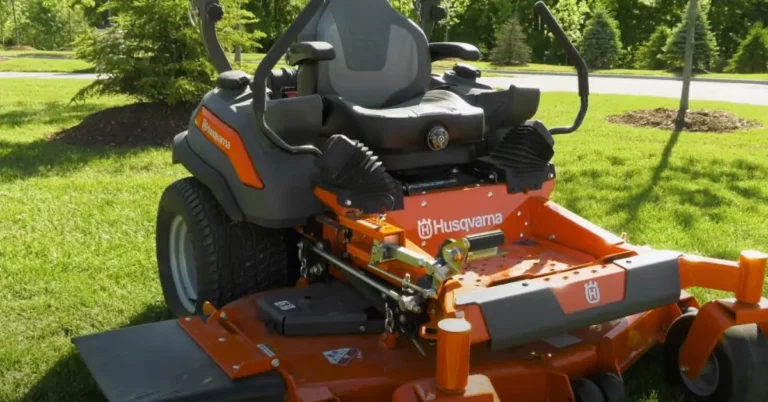
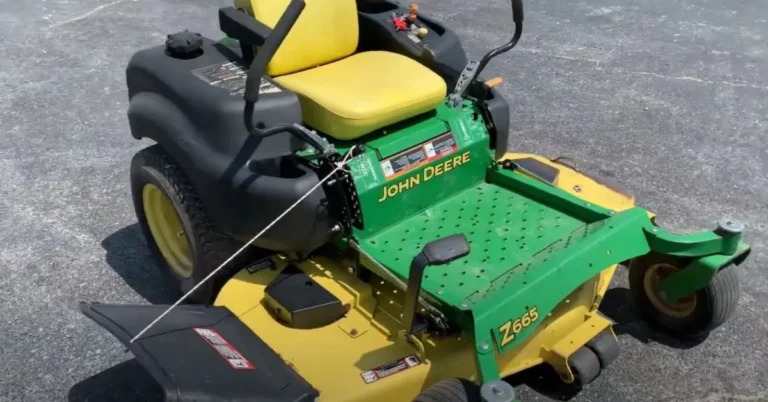
![[Fixed] Common Ferris Zero-Turn Mower Problems](https://yardcurator.com/wp-content/uploads/2023/04/Fixed-Common-Ferris-Zero-Turn-Mower-Problems.jpg)
